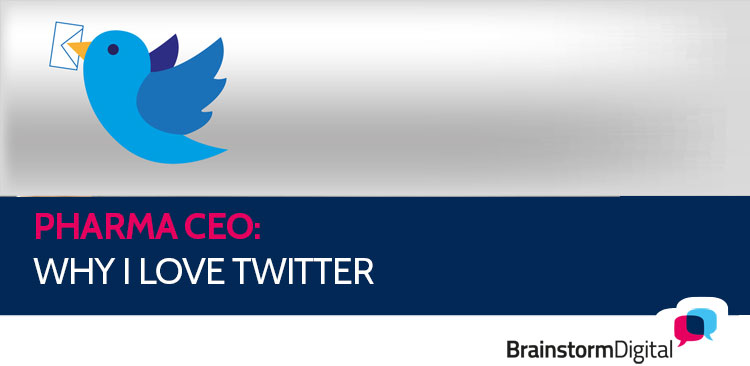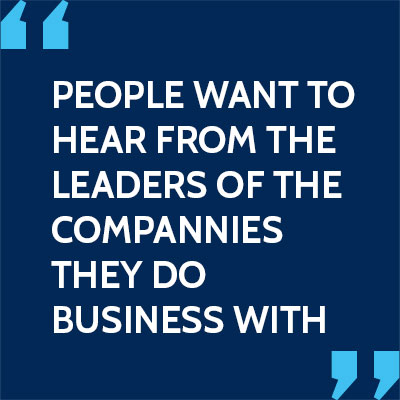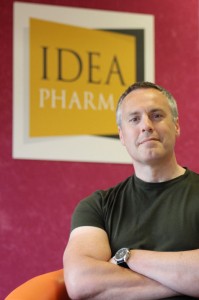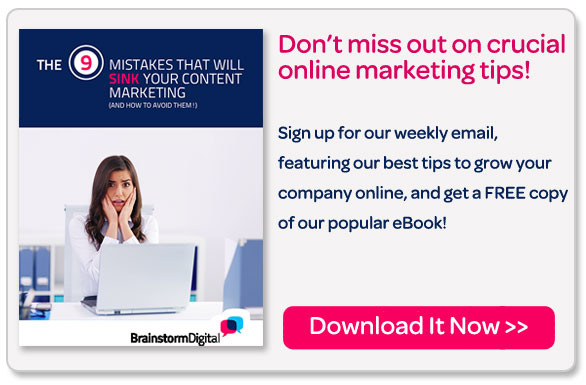 Company leaders on Twitter are still a rare breed.
Company leaders on Twitter are still a rare breed.
According to a 2014 survey*, 68% of Fortune 500 company heads have no personal presence on any social media platform.
So what motivates the minority who do tweet from the top? How do they find the time? And does it really make a difference to their businesses?
To find out what it’s like to be a CEO on Twitter, I spoke to Mike Rea of IDEA Pharma, a prolific tweeter with nearly 1,300 followers. Mike was named by PharmaVoice as one of the 100 most inspiring people in the life sciences, and also finds time to run an independent record label, write the UK’s most widely-syndicated album review column, and play guitar (badly, he claims).
He reveals:
• The main benefit he gets from tweeting
• His biggest challenge on the platform
• How tweeting has affected his relationship with his team
• How clients have reacted to his posts
• The risk he sees for CEOs who don’t tweet
…and much more. Enjoy!
MIRIAM SHAVIV: Why did you decide to become active on social media, and Twitter in particular?
MIKE REA: Decide is probably too strong a word for what happened – I was curious about what Twitter was, so I logged on and then continued to use it. It snowballed from there. People started following me and I started watching what others were saying a little bit more. It was a soft, gentle start to what has been an interesting process.
MS: Were you committed to using it for business from the beginning, or did it start off as something personal and then turn into a business tool?
MR: In my spare time I own a record label, and there is a Twitter feed for that business too. The personal and business coincided, which is true of the way that IDEA Pharma works anyway. I do post personal thoughts to Twitter which I guess represent the views of the company as well, so there’s not much separation between the two.
MS: What kind of value has it given you as a business?
MR: It’s difficult to say, although we don’t know where it might go. As a user I find it has become tremendous news resource. I got to Twitter now expecting to see news about FDA approvals or clinical trial successes and failures… I go to Twitter now before I go anywhere else to find news from one commentator or another.
As a broadcaster on Twitter, people see lots more perspectives on what we think and do than they would if we were waiting to give an update once a month. There is a more active stream of consciousness from the business outwards than there ever was before.
MS: Do you feel that your target clients are really out there, ie that Twitter is reaching the right people?
MR: Some of our clients do use Twitter occasionally and there are a lot more who I know are aware of what we are saying than ever acknowledge that on the channel.
MS: Does it ever have an impact on your conversations with clients or potential clients in real life?
MR: Always, yes. With activity on LinkedIn, Google+, Facebook and Twitter, I don’t think a week goes by without someone saying they saw something we posted.
The key thing is not to rush to carry out a Return-on-Investment assessment because you would never be able to figure it out. You have to do things authentically, and then things might come back to you. I think if we set out to do it on purpose, it would be hard to measure.
MS: Are you worried about making mistakes online or saying the wrong thing?
MR: People around here are not worried about that. As long as you are decent, honest and respectful it is OK to make mistakes of judgement, although we wouldn’t want to insult anyone.
MS: How long does your Twitter activity take every day?
MR: I keep a window open at the side of the computer screen all day so I can watch what’s being said. I tend to respond when I am interested, so I honestly couldn’t tell you if I spend half-an-hour or an hour a day – it’s broken down into one-minute, two-minute chunks.
MS: Has your personal Twitter activity changed the way you relate to your staff? Has there been an internal impact?
 MR: Accidentally, yes. Because my Twitter feed is the company’s feed, it gets posted to the company website.
MR: Accidentally, yes. Because my Twitter feed is the company’s feed, it gets posted to the company website.
If I am travelling, lots of people get to hear my thoughts on what is going on via Twitter. In the age of email, when people communicated their thoughts on email, there was a certain protocol; now people are communicating their thoughts more actively and spontaneously.
I encourage everyone at IDEA to have their own Twitter accounts and Facebook accounts, to watch not just what I am saying, but what other people are saying too. So it does have an impact, although one that is hard to measure other than that it promotes transparent communication.
MS: What is the biggest challenge for you on Twitter?
MR: When you go on, you might see the last 5 minutes of activity. The best tweet in the world might have been posted 30 minutes ago, but the chances of you seeing it are very low.
That’s true as a user, but also as a communicator. I might think I posted something amazing but the likelihood someone has seen it is low. Twitter now has a digest where at the end of the week they tell you who has seen your posts and what’s happened to them. It’s down to Facebook levels of reach.
Personally, the biggest challenge is fitting my thoughts into 140 characters – usually you want to say a lot!
MS: Your company is active on lots of platforms including LinkedIn. You’re also a rare Pharma company on Google+. How do they all fit together?
 MR: Facebook, LinkedIn and Twitter get the lion’s share of attention just because they are two-way channels. We occasionally think we should put something up on Google+ in case people are looking.
MR: Facebook, LinkedIn and Twitter get the lion’s share of attention just because they are two-way channels. We occasionally think we should put something up on Google+ in case people are looking.
LinkedIn is an interesting channel as it is becoming a channel for thought. We have nearly 5,000 fans on Facebook, but it’s becoming a lot less useful. Now when you post, only about 100 people see the posts unless you sponsor them, which I think changes the nature of your communication.
MS: What is your advice to other Pharma CEOs who want to make Twitter worthwhile for their business?
MR: I see it as an expectation more than as a lifestyle. People want to hear from the leaders of the companies they want to do business with. It comes back to authenticity. People want to see that the leaders of those businesses have opinions and are not going through focus groups to water down everything that they think into something fit for publishing.
I think it would be nice to have more high-end discussion and access, and people now expect it. If you’re hiding behind layers of communication, there’s a risk that you’re only ever going to be seen as a politician who’s there for the big presentations.
MS: So, just get out there and do it?
MR: The alternative is that people think you have something to hide. If you don’t have anything to hide that’s fine. If you have something to say, there are so many ways to say it now. Don’t wait until the annual conference.
The interesting thing for me is that people want to hear it. You start out thinking, “Who on earth wants to hear what I have to say?” and then you find out that there are people who do! That is rewarding in itself.
MS: Mike Rea of IDEA Pharma, thank you.
*http://www.domo.com/blog/2014/09/ceos-its-time-to-get-off-the-social-media-sidelines/






1 Comment. Leave new
Nice to hear a Senior Pharma professional and Pharma company getting on board enthusiastically with digital and social media. The Pharma industry has so much to share with customers, patients, healthcare providers and hopefully will move into this space more willingly